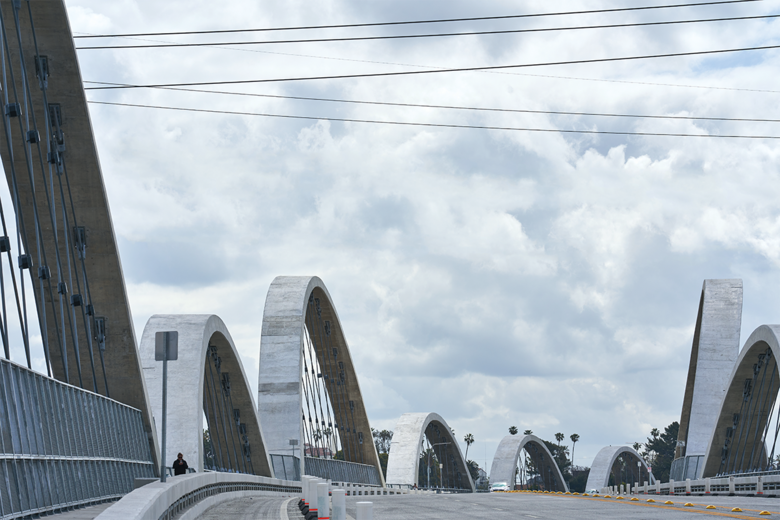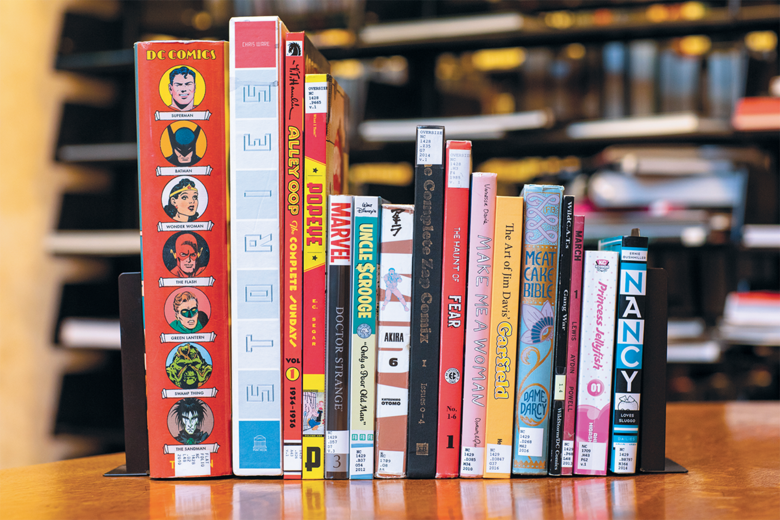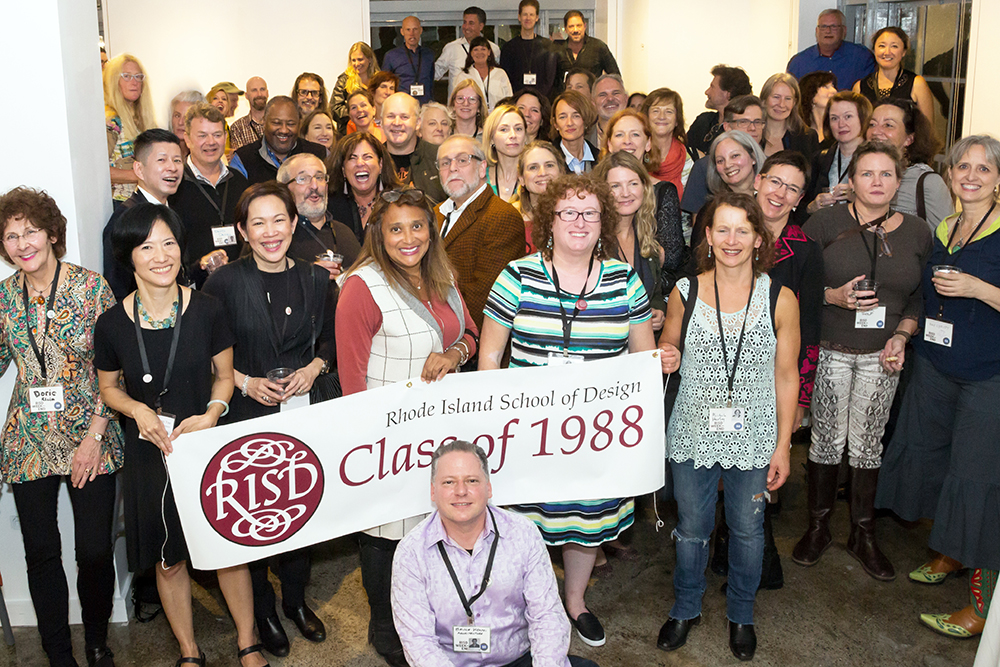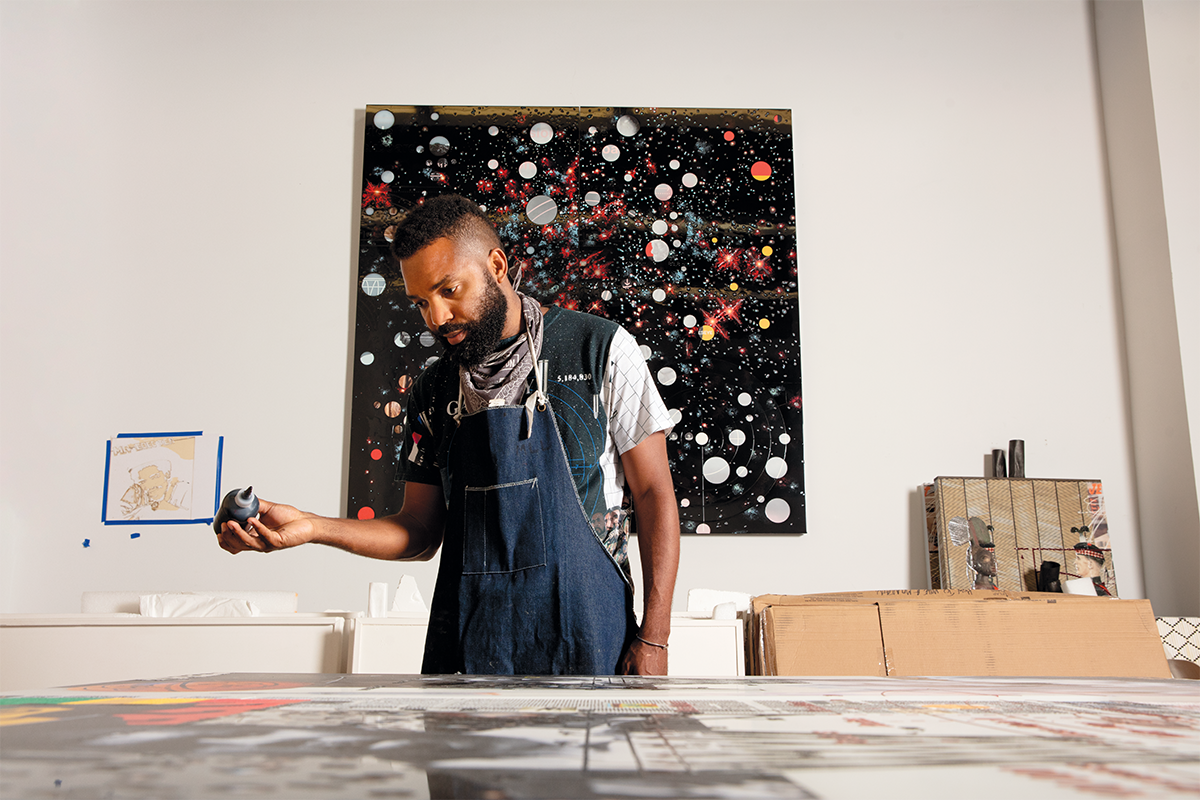
Encyclopedia of Invisibility
From outer space to the Arctic tundra to the Mississippi Delta, Tavares Strachan creates work that “exemplifies the power of human ingenuity.”
WHEN TAVARES STRACHAN 03 GL studied art at the College of the Bahamas in the late 1990s, his creativity and “go-getter attitude” were unmistakable, according to his classmate Christophe Thompson MFA 07 GL.
“Tavares didn’t shy away from the potential of a project,” Thompson remembers.
The two hit it off, Thompson says, in part because while some of their fellow students expressed wariness about the unknown, he and Strachan did not. “We found that we were having all these conversations about possibilities,” Thompson says. It was like swimming: “Some kids look at water and say, ‘Oh, that looks scary.’ And some kids say, ‘I want to go in.’”
Strachan, a RISD trustee, has been going in—all in—for more than twenty years. As a conceptual artist, he blends drawing, painting, printmaking, glass, sculpture and video with deep-dive scientific and historical research and a desire to elevate people and ideas overlooked by much of society. His breadth and flexibility, his confidence in bypassing boundaries, and his commitment to telling untold stories add up to work “that exemplifies the power of human ingenuity” and “pushes the limits of what is possible in art.” That’s according to the MacArthur Foundation, which in September 2022 awarded him one of its prestigious annual fellowships known as “Genius Grants.”
“I think I speak for a lot of folks out there who have been frustrated with the status quo and the way systems work,” Strachan says. “[The MacArthur Foundation] wanted something else. And they pointed at me.”
“Something else” is like when, in 2005, while still a graduate student at Yale, Strachan traveled to Arctic Alaska and carved a 4.5-ton block of ice out of a frozen river. He shipped it via FedEx to the Bahamas and displayed it at his former elementary school in a solar-powered glass freezer that he built in collaboration with scientists at MIT. This was The Distance Between What We Have and What We Want, a project that highlighted ideas of cultural and geographic displacement and recognized the Black polar explorer Matthew Henson, who was one of the first people to reach the North Pole but is usually overshadowed by his fellow explorer Robert Peary. Strachan’s subsequent trips to the Arctic culminated in Polar Eclipse, a sweepingly diverse exhibition at the 2013 Venice Biennale, where he led the Bahamas in establishing its first national pavilion at the event.
In 2009, Strachan began training at the Yuri Gagarin Cosmonaut Training Center in Star City, Russia, learning to cope with the stress and pressure of simulated space travel. The training “was very much like a studio practice for me,” he told an interviewer at Frieze Seoul last fall, and the experience grew into a years long multimedia project titled Orthostatic Tolerance. Eventually, Strachan developed Enoch, a 3U CubeSat (nano-satellite) that contains a 24-karat gold bust of Robert Henry Lawrence Jr., the little-known first Black astronaut, who died in a supersonic plane crash before he was able to go into space. In 2018, Enoch was launched into orbit from a SpaceX Falcon 9 rocket and is still circling the Earth.
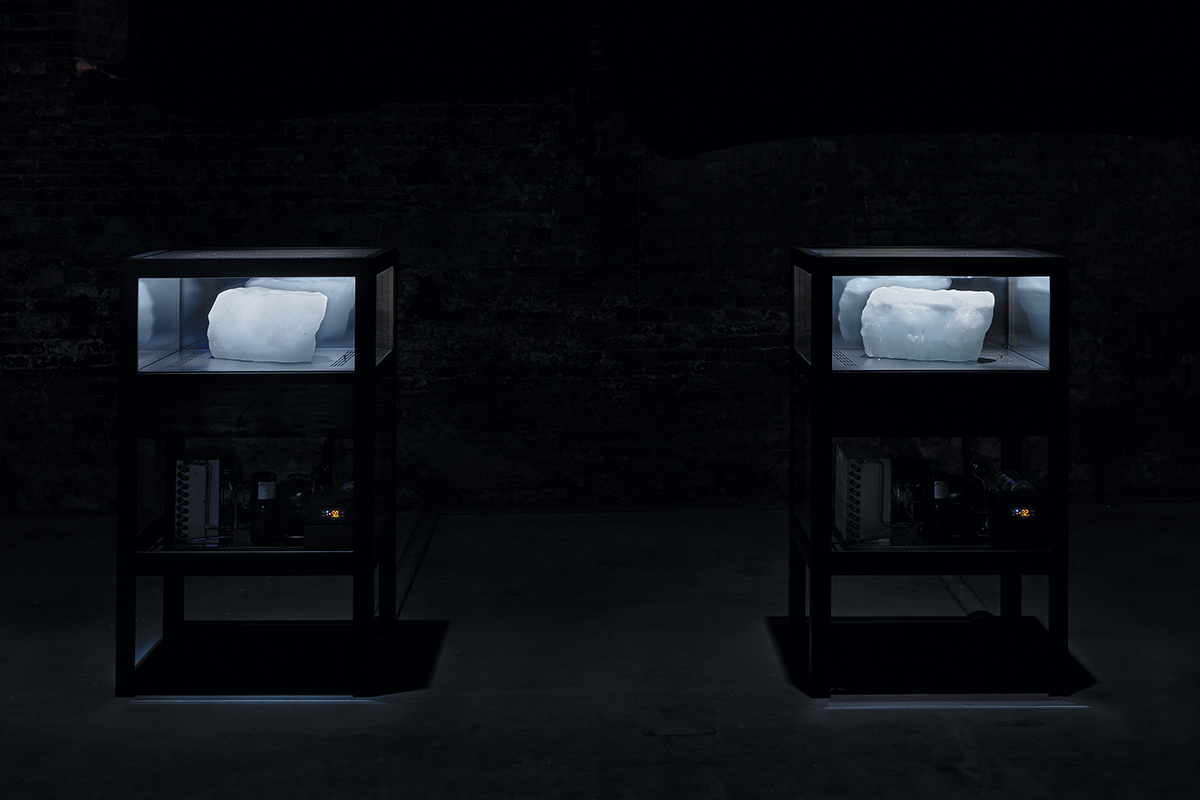
Much of Strachan’s work stems from his Encyclopedia of Invisibility, a 2,400-page leatherbound opus that documents people, events, and ideas that didn’t make it into the Encyclopedia Britannica he pored over as a kid. Among the more than 17,000 entries in the Encyclopedia of Invisibility are Henson and Lawrence; Sister Nancy, the first female dancehall DJ in Jamaica; and Mary Bonnin, the first female master diver in the United States Navy. Strachan transforms individual encyclopedia entries into a startling range of objects, such as the life-size blown-glass sculpture of a diver submerged in a glass tank filled with mineral oil. Because light passes through the glass and the oil the same way, the diver is sometimes visible, sometimes not, depending on where the viewer is standing.
This revealing and uncovering are the foundation of Strachan’s work.
STRACHAN GREW UP in Nassau in the Bahamas, in a family of makers. His mother, Ella, was the oldest of thirteen siblings and worked as a seamstress. When he was five, Ella had a job making dresses for contestants in a beauty pageant; she made tuxedos for him and his older brother so they could attend the event by her side. “I believe I inherited a certain level of aesthetic tactical ability from her,” Strachan says.
As a kid, living on an island, Strachan could not go very far, but he dreamed of going to “the bottom of the ocean, the top of Mount Everest, the pyramids of Giza, the belly of a whale.” Every year, he participated in Junkanoo, the Bahamian street festival that evolved from West African traditions over hundreds of years. Groups get together to make elaborate, colorful sculptures and costumes. Strachan calls it “a staple of creativity in the Bahamian community” and “a collision between making and storytelling.”
The abundance of Junkanoo finds its way into much of Strachan’s two-dimensional work, which combines seemingly unrelated images within a frame: a rocket ship, a crossword puzzle, and Shakti, the Hindu goddess, for example. For the 2018 installation Six Thousand Years, Strachan erected soaring wall-sized grids of hundreds of entries from the Encyclopedia of Invisibility. Walking through the installation, viewers are literally surrounded by stories—an alternate universe of information.
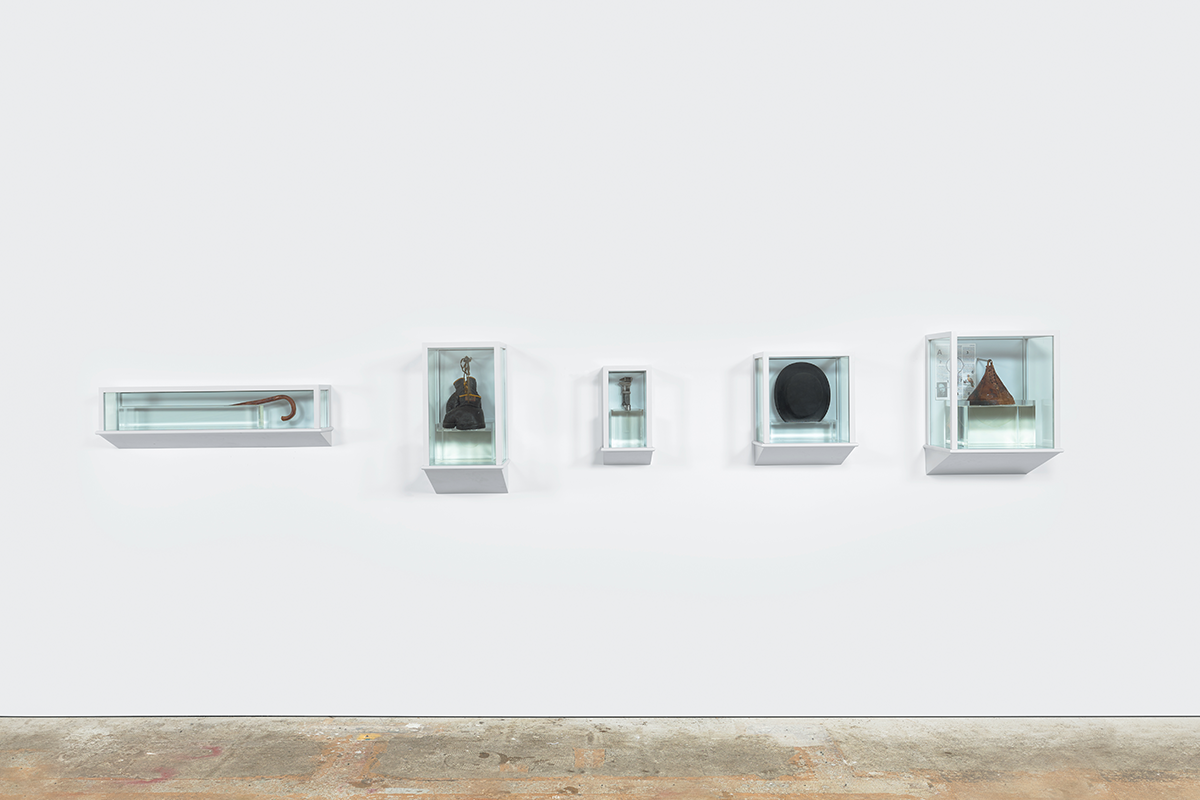
At the College of the Bahamas (now the University of the Bahamas), one of Strachan’s professors told him about RISD and described how students “could make anything there,” Strachan remembers. He wanted to go, but it was a complicated decision. “When you’re from a poor family, you represent the village, and if you’re the one who could be the breadwinner for the village, you have to think deeply about how you’re going to operate in the world,” he says. “I remember thinking I should be an architect or an engineer, something that was still in the realm of making and building and was seen as more practical. But my father asked me, ‘Do you love those things as much as you love being an artist?’ I said no. And he said, ‘There’s your answer.’”
RISD helped shape Strachan as a person, he says: “It was a space where all kinds of making collided, where you were encouraged to think as much as you were encouraged to have a strong sense of materials... the ethics of making, the fundamental principles of artistry, the respect for process, the respect for tradition, and at the same time, disrupting all of that to make something new.”
WHAT STRACHAN MADE after graduating was unquestionably disruptive and new. While earning an MFA in sculpture at Yale, he conceived Where We Are Is Always Miles Away, securing permission from the city of New Haven to excavate a 3,000-pound piece of sidewalk, parking meter included, where his car had once been ticketed.
His travels to the Arctic soon followed, as did his cosmonaut training in Russia and his establishment of the Bahamas Aerospace and Sea Exploration Center, where he conducts research, develops projects, and brings science and technology opportunities to his home community.
Throughout every project, Strachan is both a philosopher and a problem-solver, according to Mariko Tanaka, his studio director in New York. “He has more ideas than one can realize in one life,” she says. He gets a vision in his mind and is able to manifest it because he works well with figuring out what’s needed, step by step, to make it feasible and functional in the world.”
Strachan’s wildly ambitious endeavors place him on a path parallel to those of the people and ideas he wants to honor, those who pushed beyond societal and cultural limitations. When the boundary stretching complexity of his own ideas strikes others as unattainable, he pushes forward. “When I was fundraising to move that piece of ice from the Arctic to my elementary school, a very supportive patron of mine wrote me a check, but as she did, she was saying, ‘This is not going to work,’” Strachan recalls. “The idea of impossibilities has always been something I love. When you’re a maker, you’re always making a thing that doesn’t exist yet.”
WHEN STRACHAN RECEIVED the phone call notifying him that he’d won the MacArthur Fellowship, he was in Seoul installing a show. He didn’t recognize the number, and thinking it was a prank call, he nearly didn't answer. Despite the exciting news, he found it difficult to share with family and friends. His father had died just a few weeks earlier. The combination of mourning a loss and celebrating an accomplishment reminded Strachan of where he came from. “It was my dad who really gave me permission to be me,” he says. “The intentionality I have as an artist comes from the conversation we had when I wanted to go to RISD.”
When Strachan contemplates a new idea or maps out a new project, the audience he thinks about is that young man, deciding to become an artist, and his childhood self. What stories will resonate with that kid and other kids who are told at a young age that they can do anything they want when they grow up? Many of Strachan’s exhibitions include sculpted neon glass tubing that spells out empowering statements such as “I am” and “You belong here”—pieces that not only hang on walls but also appear in site-specific installations such as a field of desert craters in Palm Springs or a barge floating on the Mississippi River in New Orleans.
"One of the things I hope an audience will get from my work is that they begin to find value in their own experience,” Strachan told an interviewer after he was named a MacArthur Fellow. “For them to go on their own journey. Because I am on a journey also.”
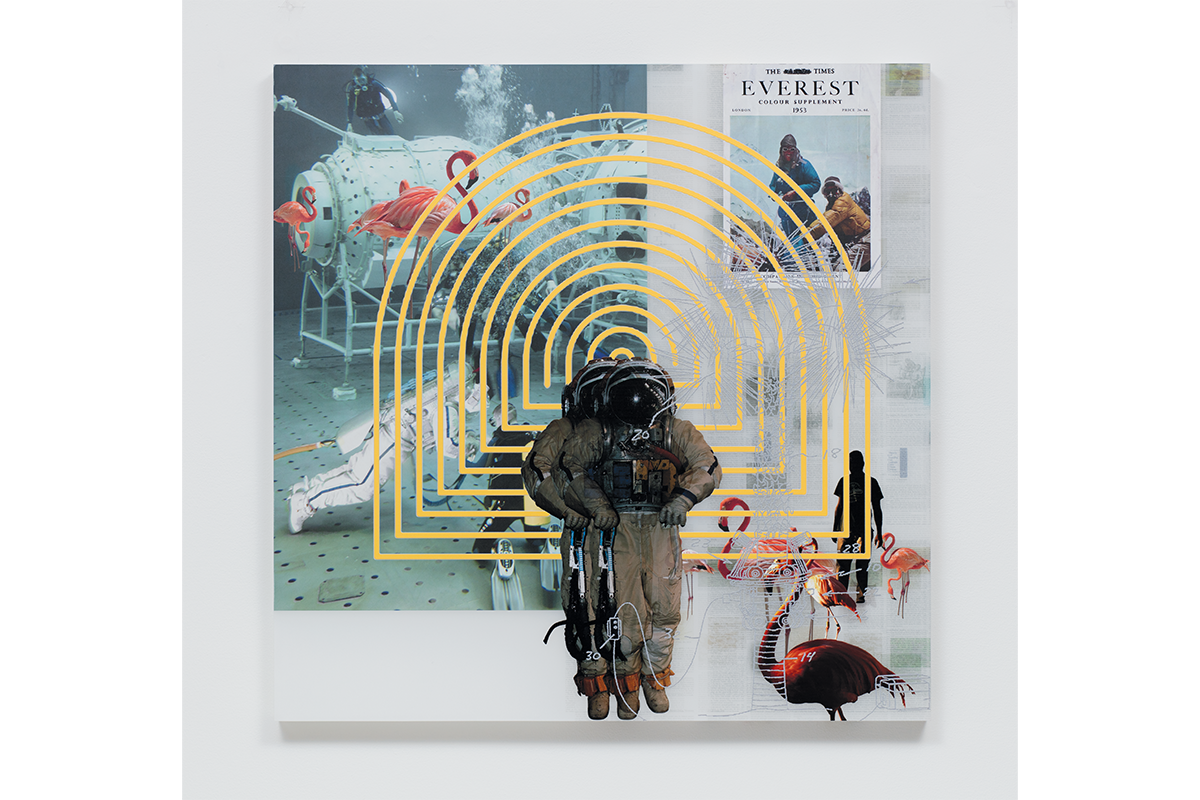
Words by Jennifer Sutton


